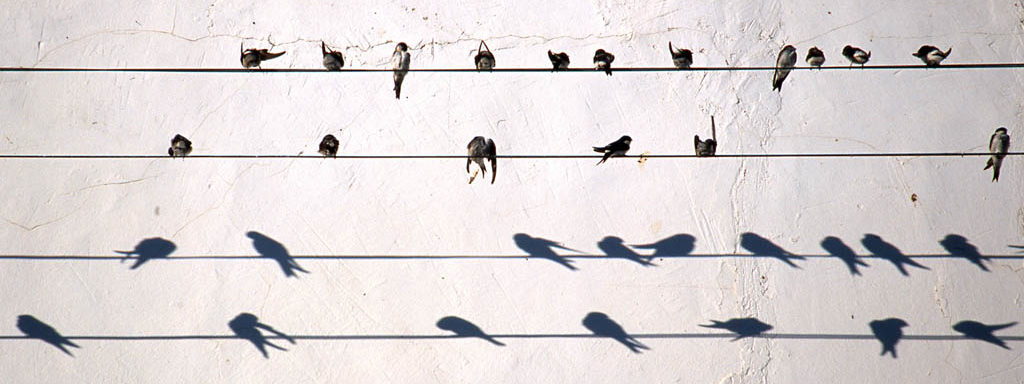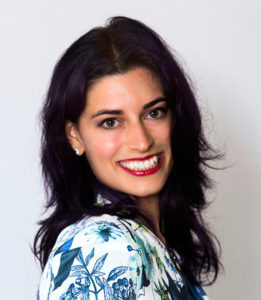
02 May The Art of Being Good Enough
This past March, I had the privilege of hosting a community coffee hour for one of my biggest heroes. Our guest of honor was Holly Mikkelson, who, among other notable accomplishments, created the ACEBO self-study interpreting materials.
She never ceased to amaze me during our conversation, least of all with her humility. She spoke almost apologetically, as though the fact that she took an informal study resource and turned it into the first set of comprehensive audio court-interpreting practice materials in North America is made any less incredible by the fact that the whole project started around a kitchen table. Her work has elevated our profession and enabled so many of us to wrap our minds around the challenging techniques posed by interpreting.
“Did you know that your materials would be hard?” I asked her (if you’ve ever used Interpreter’s Edge, you know those practice exercises are no joke).
“I certainly did!” came her response.
“What would you recommend to people in the field, both newbies and veterans of the profession?” I asked.
“For people who are just starting out, I’d say keep plugging away,” she said. “And you’re never going to be perfect. Interpreting is the art of being good enough.”
 “You should always try to come as close to being perfect as you can,” she continued. “Remember the people you interpret for, and interpret for them, for the people who don’t speak the language and really depend on you to know what’s being said. If you take that attitude into your exams, you’ll be a little more relaxed and confident and not worry so much about being perfect. Interpret for those people, not for this imaginary inquisition that is going to be examining you.”
“You should always try to come as close to being perfect as you can,” she continued. “Remember the people you interpret for, and interpret for them, for the people who don’t speak the language and really depend on you to know what’s being said. If you take that attitude into your exams, you’ll be a little more relaxed and confident and not worry so much about being perfect. Interpret for those people, not for this imaginary inquisition that is going to be examining you.”
That concept resonated with me, and it reminded me of something that our Glendon MCI (Master’s in Conference Interpreting) Director Andrew Clifford always told us, something that I now say to my students:
“Interpreters have good days, and they have bad days. When you go into the room on exam day, you will be nervous; you may not have slept great the night before; your brain might feel a bit fuzzy. In real life, that will happen, too. So, when you are tested, you are tested not to see you at your best, necessarily, but to potentially see you at your worst and to have your worst be good enough.”
What it comes down to is that interpreting is an art form. Our renditions are impacted by many factors, some personal, some external. Although we often try to treat it otherwise, interpreting is not an exact science.
To admit this fact is to acknowledge the tremendous risk taken on by our colleagues and ourselves.
That’s why part of being “good enough” means being honest with ourselves. We must know what we do well and capitalize upon it. We must learn to clear our minds of stress and panic to focus on the task at hand. Finally, we must notice our weaknesses and build awareness of our blind spots.
We must know when we’ve made mistakes and correct them.
 To acknowledge that we are imperfect is to see what stands in the way of perfection and ensure that any personal weak spots do not negatively affect our clients.
To acknowledge that we are imperfect is to see what stands in the way of perfection and ensure that any personal weak spots do not negatively affect our clients.
To be an interpreter is to know that we are not perfect, but that if we work very hard, perhaps we can be good enough.
 Athena Matilsky fell in love with languages the year she turned sixteen. She majored in Spanish interpreting/translation at Rutgers University and also studied French. After graduation, she taught elementary school in Honduras and then returned home to begin freelancing as a medical and court interpreter. She later became a staff interpreter for the NJ judiciary. She has gone on to earn certifications as a healthcare interpreter and a federal court interpreter for Spanish and as a court interpreter for French. Most recently, she received her Master’s Degree in Conference Interpreting from Glendon at York University. She currently works as an interpreter and teacher, training students to acquire the skills necessary to pass state and federal interpreting exams. When she is not writing or interpreting, you may find her practicing acroyoga or studying French. Website: www.athenaskyinterpreting.com
Athena Matilsky fell in love with languages the year she turned sixteen. She majored in Spanish interpreting/translation at Rutgers University and also studied French. After graduation, she taught elementary school in Honduras and then returned home to begin freelancing as a medical and court interpreter. She later became a staff interpreter for the NJ judiciary. She has gone on to earn certifications as a healthcare interpreter and a federal court interpreter for Spanish and as a court interpreter for French. Most recently, she received her Master’s Degree in Conference Interpreting from Glendon at York University. She currently works as an interpreter and teacher, training students to acquire the skills necessary to pass state and federal interpreting exams. When she is not writing or interpreting, you may find her practicing acroyoga or studying French. Website: www.athenaskyinterpreting.com
Main photo “PERFECCIÓN DEL CÍRCULO” (cropped) from ENFOQUE GEOMÉTRICO, under the CC BY-NC-SA 4.0 licence. First body photo taken from “La perfección” at Julen Iturbe-Ormaetxe, Consultoría artesana en red, under the CC BY-SA 3.0 ES licence. Second body photo (cropped) taken from “Beca para Curso de Perfeccionamiento y Postgrado Musical” from the Sistema de Información de las Industrias Culturales y Artes (Peru Department of Culture), under the CC BY 4.0 licence.

Great piece. I have been trying for years to find ways to communicate to interpreters that it is all right to be fallible. Not only all right–it’s part of the human condition. Errare humanum est. We do our best and we own up to our mistakes.
I’m glad you liked it Kenneth! Love the latin. 🙂
Wonderful personal exploration by Athena of of Holly Mikkelson’s message about
To be an interpreter is to know that we are not perfect, but that if we work very hard, perhaps we can be good. And it applies in life beyond interpreting.
Thank you, Athena.
It does indeed apply to life beyond interpreting! Thank you for taking the time to comment.
Great article! Thanks for sharing such pertinent thoughts. Loved Holly’s advice to focus on the person that we are interpreting for.
I’m glad you enjoyed it! I really appreciated all of Holly’s wisdom.
I remember learning a while back that the typical person in the U.S. eats something like a pound or two of insects per year. Most of them are ground into the different flours we consume. Being that it is impossible to remove every last bug from crops, the USDA sets a threshold that is allowed to be mixed in with what winds up in our food. In a truth that is just as ugly, we all know that as interpreters it’s impossible to be 100% correct, 100% of the time. So, where does that leave us? Well, we need to acknowledge that there will be errors and many of them can be accepted. The question then becomes, which errors are tolerable and which have to be addressed. Next question is, who should be pointing out those material errors. In my opinion, the answer is found in a mix of confidence and humility. Humility in being able to look beyond yourself and be willing to point out your serious error before anyone else does, or worse, before your error affects the judicial process. And confidence to feel bold enough to speak out about your flub, knowing this won’t mean you are suddenly unqualified to do this work, but more.
The 100% should still be our goal, but ironically, we only reach it when we are comfortable pointing out our flaws.
P.S. – If we miss noticing our own errors, the next ideal person to point it out is a fellow interpreter (not, say, a random bilingual listener). Only an interpreter is optimally qualified to evaluate the performance of another interpreter.
Wow, that’s an incredible analogy. I did not know that about the bugs! I agree that the ideal person to point out mistakes is either oneself, or a fellow interpreter. Bilingual people who are linguistically minded are quite capable as well, but in many circumstances those who are untrained do not know what to listen for (like the time a bilingual attorney corrected a colleague of mine for interpreting the word “pero” properly as “but.” He thought she was saying perro, which means dog.)
I love this conversation! Thank you, Athena. That quote Holly gave you should be framed: “when you are tested, you are tested not to see you at your best, necessarily, but to potentially see you at your worst and to have your worst be good enough.” And notwithstanding the insects’ reference to introduce her point, I like Jesse Leonor’s framing of the issue: ” The question then becomes, which errors are tolerable and which have to be addressed.” I was just having that conversation with a colleague. I wholeheartedly believe we need to develop something more specific, some better parameters, some helpful guidance that we are sorely lacking right now in this profession. We “wing it”, we rely on honest self-monitoring (although not always sure what to monitor for), and that’s all fine. But in order to grow and solidify our standing as a profession in the legal arena, we need more than that. Let’s keep the conversation going! Great piece, as always, Athena!
Thank you so much for your kind words, Janis! I actually put Holly’s quote “Interpreting is the art of being good enough” on my wall where I will see it every day. 🙂
Empowering interview and article. Thank you, Athena!
Thank you for reading, Brad!
Thank you, Athena, for the excellent blog entry. Holly’s talk was excellent. She is such a wonderful person and role model. After spending 25 years as an interpreter, it is truly freeing to now be able to understand that we can not be perfect but we can do our best and to keep trying even on the days we feel we are stumbling on our own words. “The good enough” confidence is empowering, because an interpreter can just relax and keep doing their job without listening to the busy inner judge but focus on the client and the interpreting instead.
Exactly, Rania! And once we can let go of some of that stress, we will actually do a better job. 🙂 I’m glad the article was helpful.
After a particularly “intense” 2-week period to end this past month of April, reading this article was like sitting down at the end of a hard day and sipping one’s favorite drink. Relaxing. Even permissive. I closed my eyes and smiled. Although I’ve always acknowledged that it’s important to recognize that one is not perfect (keeps us humble, honest, and working to improve), this blog post made me realize that I have nothing to be upset about when others, outside the profession, don’t understand the hard work that goes into what we do and that we cannot be expected to be at 100% all the time. If I were to be called in to court one day to testify about the quality of my work over these 2 weeks, I will have this post, and Jesse Leonor’s response, fresh on my mind. (Spot-on, Jesse!!)
Oh, I’m so glad this post was helpful to you Ezequiel. Your kind words are music to my ears. I hope you’ve taken even more time to recover from the intensity of your last two weeks!
Me encantó tu artículo Athena. Seguí explorando tus fuentes fotográficas y di con un sitio fantástico, el que enlaza con la fotografía de las piedras. Ahí, el autor describe la perfección como una cárcel de cristal. Me sirvió mucho la cita de Andrew también. ¡Gracias!
Oh wow, sí. Una cárcel de cristal de verdad. Gracias por compartir.
I really needed to read this article. Thanks, Athena, for putting it together. I am a 23 year veteran freelance interpreter for EOIR. After all these years, I am going to take a leap of faith and take the state certification exam in my state. For many years I’ve been asked, “are you certified?”. I got tired to answering “no”. Next week I will have the opportunity to change that. Having met Holly Mikkelson, an eminence in our profession, and reading through the article made me feel confident and ready for the task. The anxiety that taking an exam can produce is definitely a factor to be considered. After all these years of professional experience, I am going to do it!! If I pass, great; if I don’t I’ll take it again and again until I get my credential.
Thanks so much for sharing this piece with the rest of us and thanks for all the work you do on behalf of our colleagues! Kudos!!!
Oh wow! Good luck, Francesca! I hope your exam goes/went well. Just taking that step is significant. I’m rooting for you. 🙂